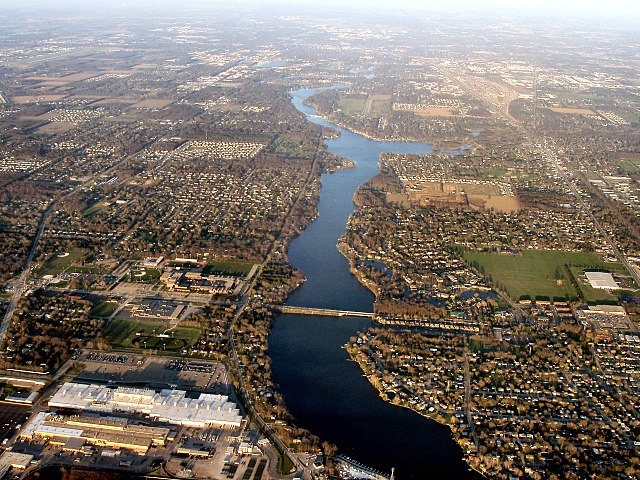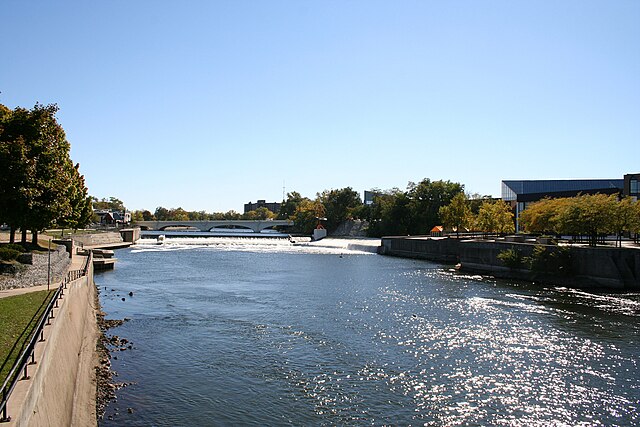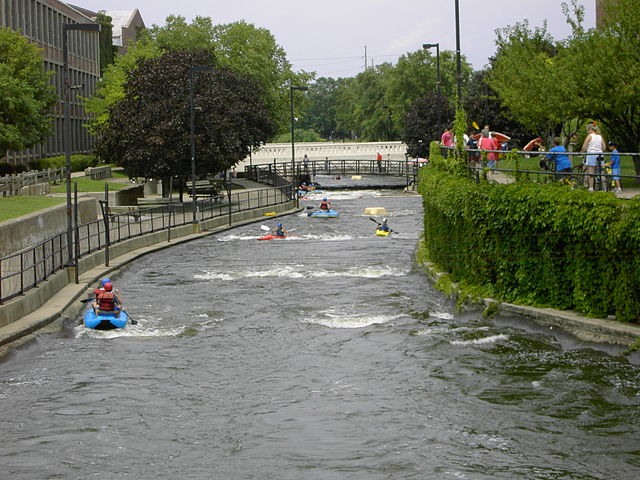The Moccasin Bluff site is an archaeological site located along the Red Bud Trail and the St. Joseph River north of Buchanan, Michigan. It was listed on the National Register of Historic Places in 1977, and has been classified as a multi-component prehistoric site with the major component dating to the Late Woodland/Upper Mississippian period.
Moccasin Bluff site
Charred 8-rowed maize cobs from one of the smudge pits
Moccasin Bluff impressed exterior lip rim sherd
Partially reconstructed vessel of Moccasin Bluff notched applique strip
St. Joseph River (Lake Michigan)
The St. Joseph River is a tributary of Lake Michigan with a length of 206 miles (332 km). The river flows in a generally westerly direction through southern Michigan and northern Indiana, United States, to its terminus on the southeast shore of the lake. It drains a primarily rural farming area in the watershed of Lake Michigan. It was enormously important to Native Americans and greatly aided in the colonial exploration, settlement and administration of New France and the nascent United States as a canoe route between Lake Michigan and the watershed of the Mississippi River.
St. Joseph River flowing west from Elkhart (top) through Osceola (middle) and into Mishawaka (bottom).
The St. Joseph River flows through downtown South Bend, Indiana. The abrupt turn of the river gives the city its name.
East Race Waterway
The St. Joe River widens as it flows west through Elkhart.








